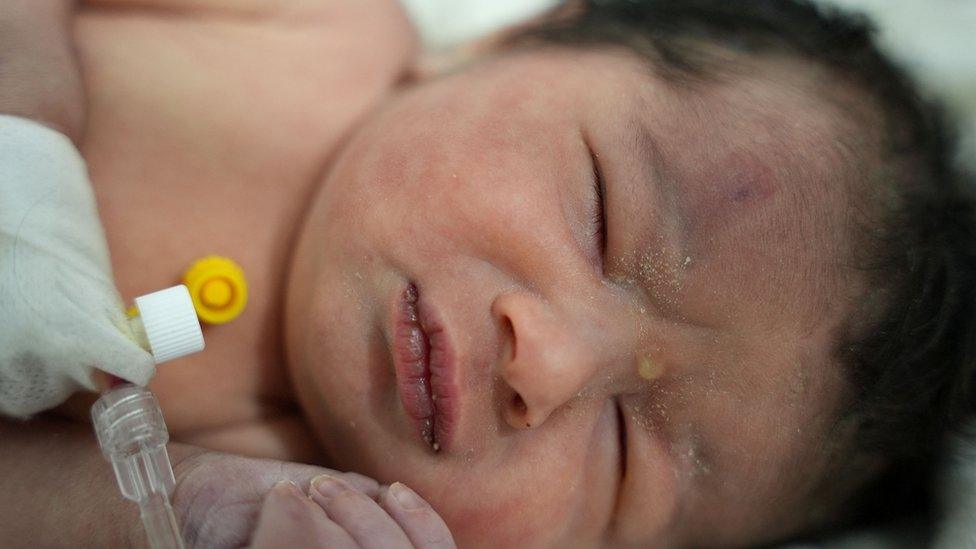Turkey-Syria earthquake: Satellite images show Jindayris devastation
- Published
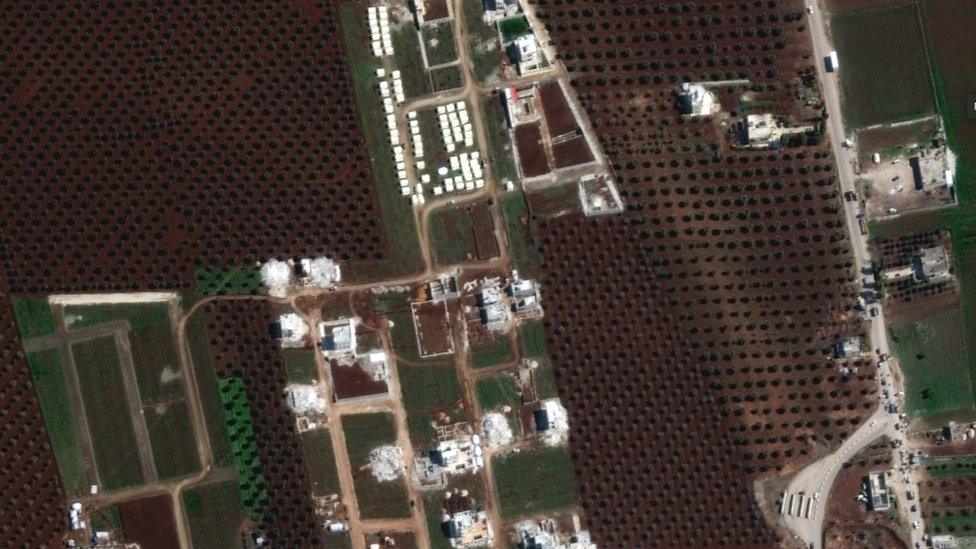
This satellite image shows dozens of tents pitched by earthquake survivors in fields near flattened buildings in Jindayris
Satellite images of a small town in north-western Syria show the extent of the devastation wrought by last week's earthquake.
The head of the White Helmets group, which has been leading the rescue effort in the opposition-held region, described the situation in Jindayris as catastrophic, with "terrifying scenes" and "destruction everywhere".
Some 200 buildings were completely destroyed by the 7.8-magnitude earthquake that struck nearby southern Turkey on 6 February.
The While Helmets say 517 bodies have been pulled from the rubble there, though another 813 injured survivors have been found alive.
Your device may not support this visualisation
The deaths represent almost a quarter of the total reported across the region, where 90% of the 4.6 million population were in need of humanitarian assistance even before the disaster.
Jindayris has also been the scene of several remarkable rescues carried out the White Helmets and the town's residents.
One dramatic video filmed hours after the earthquake showed a man carrying a newborn baby girl found beneath the remains of her family home, still connected to her dead mother by her umbilical cord. Her father, four siblings and aunt also did not survive.
Drone footage of Jindayris posted by the White Helmets a week ago showed that such rescues were the result of hundreds of people searching through the rubble, often with just their bare hands.
Allow X content?
This article contains content provided by X. We ask for your permission before anything is loaded, as they may be using cookies and other technologies. You may want to read X’s cookie policy, external and privacy policy, external before accepting. To view this content choose ‘accept and continue’.

However, the White Helmets have complained that their operations have been hampered by the failure of the UN and the international community to deliver any heavy machinery or other specialist equipment they requested.
The group's chief, Raed al-Salah, also warned on Tuesday that the search for survivors in the north-west was about to come to a close.
"The indications we have are that there are not any [survivors], but we are trying to do our final checks and on all sites," he told Reuters news agency.
Your device may not support this visualisation
The outlook is similar in government-controlled areas, where the health ministry has reported 1,414 deaths.
The UN has said 7,400 buildings have been completely or partially destroyed across Syria, and that a total of 8.8 million people have been affected.
The earthquake hit as humanitarian needs were at their highest level since the country's civil war started almost 12 years ago. It also happened during the coldest period of the year and in the middle of a cholera outbreak.
Related topics
- Published14 February 2023

- Published11 February 2023
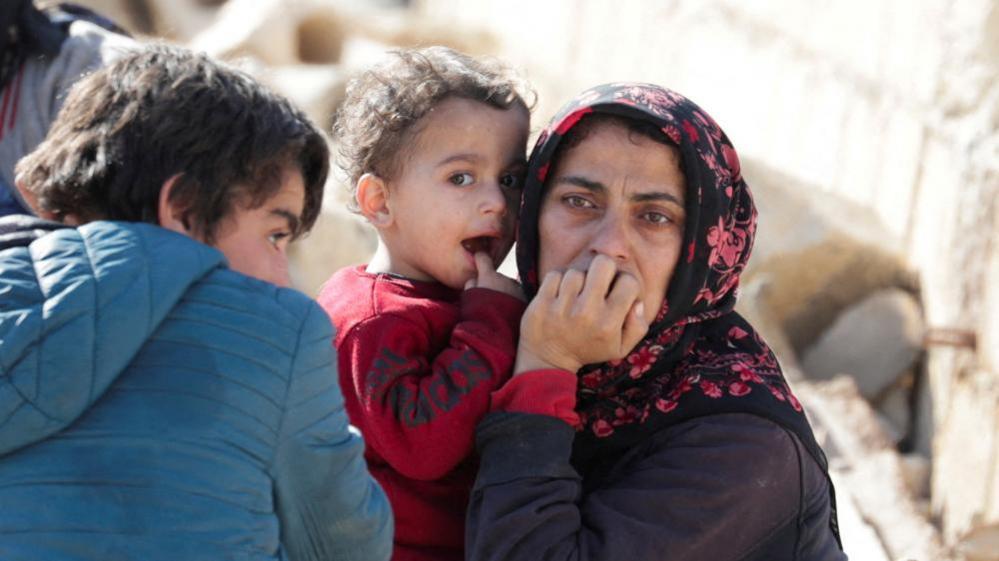
- Published10 February 2023
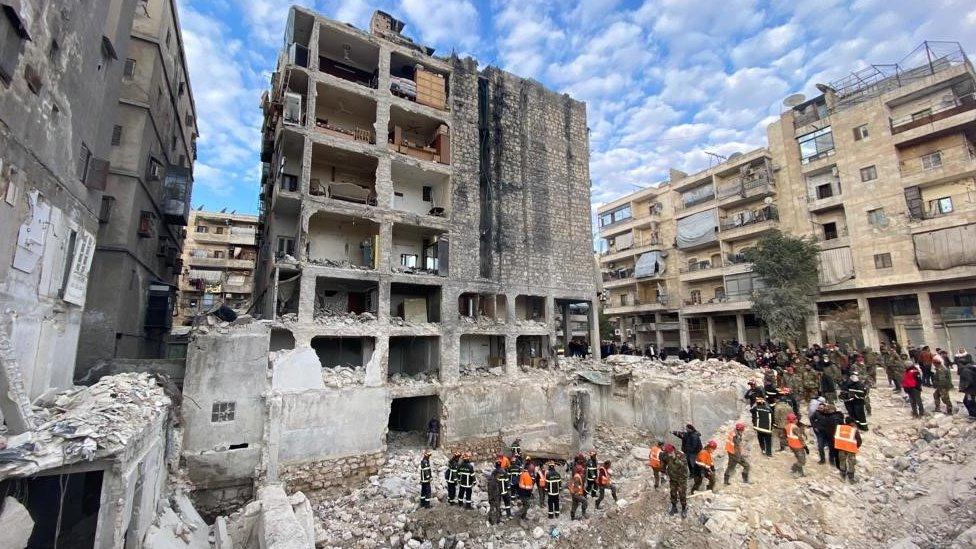
- Published9 February 2023
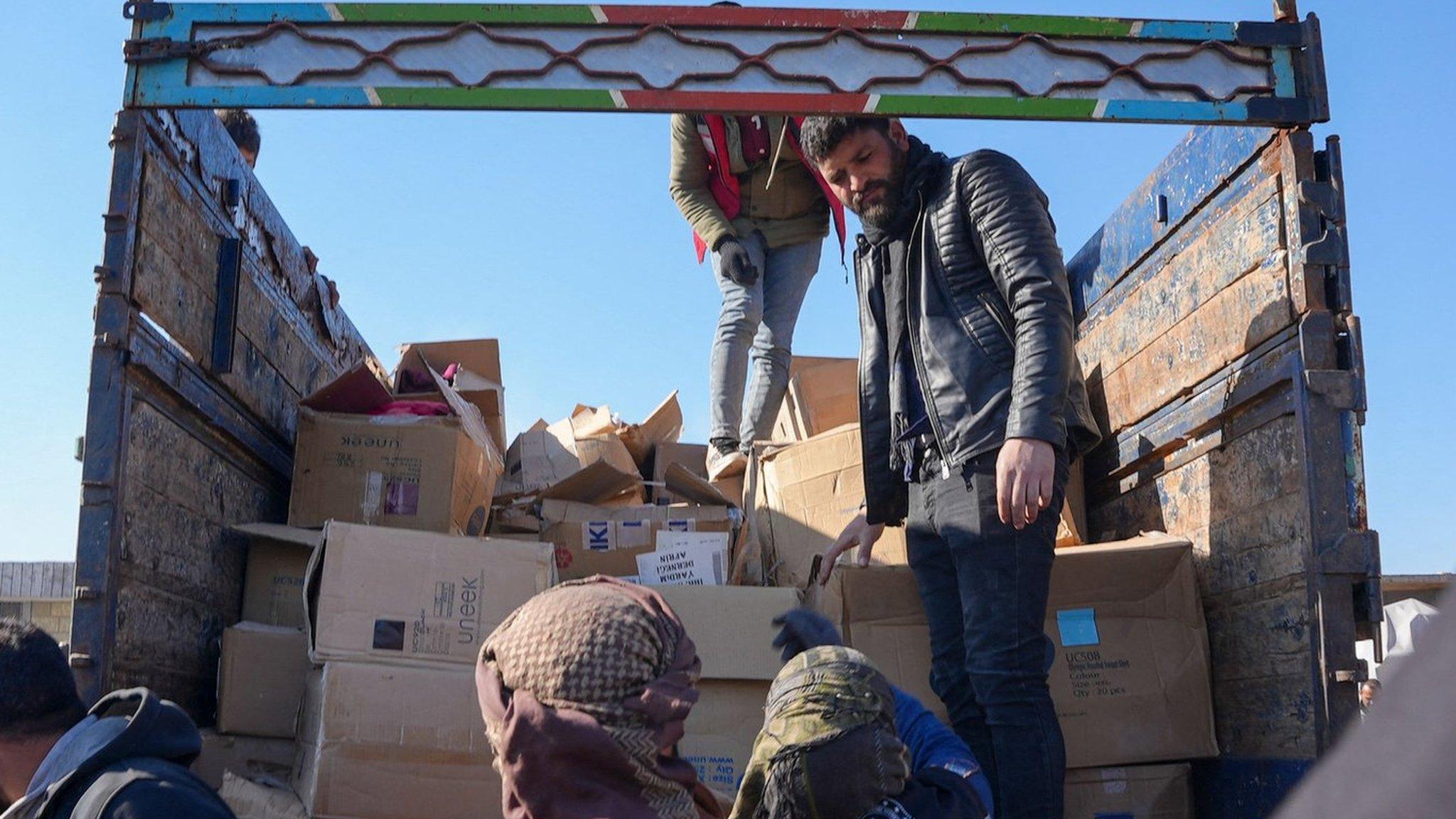
- Published9 February 2023
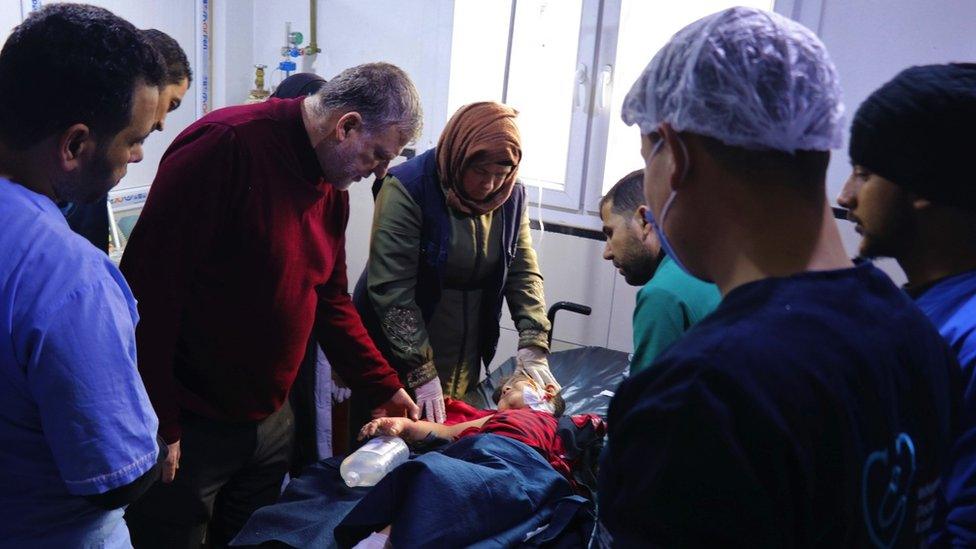
- Published8 February 2023
